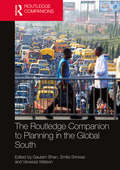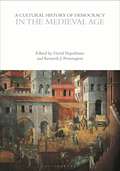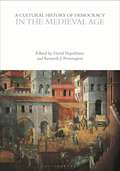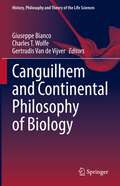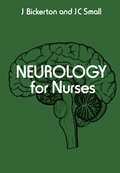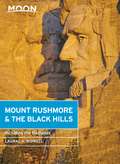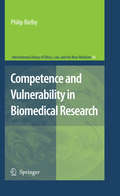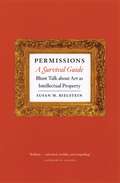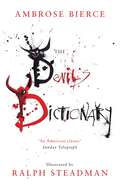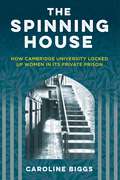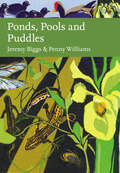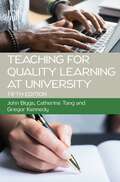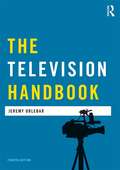- Table View
- List View
The Routledge Companion to Planning in the Global South (Routledge International Handbooks)
by Gautam Bhan Smita Srinivas Vanessa WatsonThe Routledge Companion to Planning in the Global South offers an edited collection on planning in parts of the world which, more often than not, are unrecognised or unmarked in mainstream planning texts. In doing so, its intention is not to fill a ‘gap’ that leaves this ‘mainstream’ unquestioned but to re-theorise planning from a deep understanding of ‘place’ as well as a commitment to recognise the diverse modes of practice that come within it. The chapters thus take the form not of generalised, ‘universal’ analyses and prescriptions, but instead are critical and located reflections in thinking about how to plan, act and intervene in highly complex city, regional and national contexts. Chapter authors in this Companion are not all planners, or are planners of very different kinds, and this diversity ensures a rich variety of insights, primarily based on cases, to emphasise the complexity of the world in which planning is expected to happen. The book is divided into a framing Introduction followed by five sections: planning and the state; economy and economic actors; new drivers of urban change; landscapes of citizenship; and planning pedagogy. This volume will be of interest to all those wanting to explore the complexities of planning practice and the need for new theories of knowledge from which to draw insight to face the challenges of the 21st century.
Pandiyan Parisu
by BharadidasanPandiyan Parisu is a very popular drama written in poetic form by Pavendhar Bharadidasan.It is the story of Velan and Annam and Vezha Mannan along with few other characters told effectively in a very simple fashion that makes it very appealing to its readers.
Puratchikkavi
by BharadidasanThe story of Amudhavalli and her love for Udharan also has elements like Patriotism and Revolution added to it by the veteran writter.
The Professionalization of Public Participation
by Laurence Bherer Louis Simard Mario GauthierThe Professionalization of Public Participation is an edited collection of essays by leading and emerging scholars examining the emerging profession of public participation professionals. Public participation professionals are persons working in the public, private, or third sectors that are paid to design, implement, and/or facilitate participatory forums. The rapid growth and proliferation of participatory arrangements call for expertise in the organizing of public participation. The contributors analyze the professionalization of this practice in different countries (United States, France, Canada, Italy, and the United Kingdom) to see how their actions challenge the development of participatory arrangements. Designing such processes is a delicate activity, since it may affect not only the quality of the processes and their legitimacy, but also their capacity to influence decision-making.
The Professionalization of Public Participation
by Laurence Bherer Louis Simard Mario GauthierThe Professionalization of Public Participation is an edited collection of essays by leading and emerging scholars examining the emerging profession of public participation professionals. Public participation professionals are persons working in the public, private, or third sectors that are paid to design, implement, and/or facilitate participatory forums. The rapid growth and proliferation of participatory arrangements call for expertise in the organizing of public participation. The contributors analyze the professionalization of this practice in different countries (United States, France, Canada, Italy, and the United Kingdom) to see how their actions challenge the development of participatory arrangements. Designing such processes is a delicate activity, since it may affect not only the quality of the processes and their legitimacy, but also their capacity to influence decision-making.
A Cultural History of Democracy in the Medieval Age (The Cultural Histories Series)
by Eugenio BiaginiOffering a broad exploration of the cultural history of democracy in the medieval age, this volume claims that, though not generally associated with the term, the Middle Ages deserve to be included in a general history of democracy. The term was never widely employed during this period, the dominant attitude towards democracy was outright hostility, and none of the medieval polities thought of itself as a democracy. Despite this, this study highlights a wide variety of ideas, practices, procedures, and institutions that, although different from their ancient predecessor (direct democracy) or modern successor (liberal representative democracy), played a significant role in the history of democracy. This volume covers almost 1,000 years and a wide range of territories. It deals with different political spheres (ecclesiastical and secular) and socio-political settings (courtly, urban, and rural) and examines the phenomenon from the local level up to the universal realm. This volume adopts a broad cultural approach and is structured thematically. Each chapter takes a theme as its focus: sovereignty; liberty and the rule of law; the common good; economic and social democracy; religion and the principles of political obligation; citizenship and gender; ethnicity, race, and nationalism; democratic crises, revolutions, and civil resistance; international relations; and the scalability of democracy beyond the limits of a single city. These ten themes add up to an extensive, synoptic coverage of the subject.
A Cultural History of Democracy in the Medieval Age (The Cultural Histories Series)
by Eugenio BiaginiOffering a broad exploration of the cultural history of democracy in the medieval age, this volume claims that, though not generally associated with the term, the Middle Ages deserve to be included in a general history of democracy. The term was never widely employed during this period, the dominant attitude towards democracy was outright hostility, and none of the medieval polities thought of itself as a democracy. Despite this, this study highlights a wide variety of ideas, practices, procedures, and institutions that, although different from their ancient predecessor (direct democracy) or modern successor (liberal representative democracy), played a significant role in the history of democracy. This volume covers almost 1,000 years and a wide range of territories. It deals with different political spheres (ecclesiastical and secular) and socio-political settings (courtly, urban, and rural) and examines the phenomenon from the local level up to the universal realm. This volume adopts a broad cultural approach and is structured thematically. Each chapter takes a theme as its focus: sovereignty; liberty and the rule of law; the common good; economic and social democracy; religion and the principles of political obligation; citizenship and gender; ethnicity, race, and nationalism; democratic crises, revolutions, and civil resistance; international relations; and the scalability of democracy beyond the limits of a single city. These ten themes add up to an extensive, synoptic coverage of the subject.
Language and Reality from a Naturalistic Perspective: Themes from Michael Devitt (Philosophical Studies Series #142)
by Andrea BianchiThis book celebrates the many important contributions to philosophy by one of the leading philosophers in the analytic field, Michael Devitt.It collects seventeen original essays by renowned philosophers from all over the world. They all develop themes from Devitt’s work, thus discussing many fundamental issues in philosophy of linguistics, theory of reference, theory of meaning, methodology, and metaphysics.In a long final chapter, Devitt himself replies to the contributors. In so doing, he further elaborates his views on various of these issues, for example defending his claim (in opposition to Chomskyan orthodoxy) that languages are external rather than internal; his well-known causal theory of reference; his “shocking” idea that meanings can be causal, non-descriptive, modes of presentation; his methodological naturalism; his commitment to scientific realism; and his version of biological essentialism. The volume will appeal to all scholars and students interested in contemporary theoretical analytic philosophy, and will be a must-read for any serious researcher in philosophy of language. It provides a deep insight into the work of one of the most important living philosophers, and will help readers to better understand language and reality from a naturalistic perspective.
Research During Medical Residency: A How to Guide for Residents and Faculty Mentors
by Lynne M. BianchiThis book is a guide for medical residents and faculty in the fundamentals of clinical research, publication practices, and conference skills. It offers advice on how to incorporate scholarly activities into training routines, so the process becomes more manageable and less burdensome. Suggestions for pursuing other scholarly activities, outside of clinical research, are also offered. Participation in research and other scholarly activities is a requirement for graduation from medical residency programs in the United States and many other countries. Faculty physicians who train residents are also required to produce annual scholarly work. Adding scholarship onto an already long list of requirements often feels a bit daunting to medical residents and the faculty who teach them. Fortunately, there are many forms of scholarly activity, including basic and clinical research, quality improvement projects, and educational assessments, so everyone can find interesting and feasible projects to complete. This valuable reference provides users with a reliable source to turn to whenever they have questions on how to develop, conduct, publish, or present a research project. Written with the perspective of busy faculty and residents in mind, the content balances the need for enough detail to be instructive with the need for quick access to key points.
Research During Medical Residency: A How to Guide for Residents and Faculty Mentors
by Lynne M. BianchiThis book is a guide for medical residents and faculty in the fundamentals of clinical research, publication practices, and conference skills. It offers advice on how to incorporate scholarly activities into training routines, so the process becomes more manageable and less burdensome. Suggestions for pursuing other scholarly activities, outside of clinical research, are also offered. Participation in research and other scholarly activities is a requirement for graduation from medical residency programs in the United States and many other countries. Faculty physicians who train residents are also required to produce annual scholarly work. Adding scholarship onto an already long list of requirements often feels a bit daunting to medical residents and the faculty who teach them. Fortunately, there are many forms of scholarly activity, including basic and clinical research, quality improvement projects, and educational assessments, so everyone can find interesting and feasible projects to complete. This valuable reference provides users with a reliable source to turn to whenever they have questions on how to develop, conduct, publish, or present a research project. Written with the perspective of busy faculty and residents in mind, the content balances the need for enough detail to be instructive with the need for quick access to key points.
Canguilhem and Continental Philosophy of Biology (History, Philosophy and Theory of the Life Sciences #31)
by Giuseppe Bianco Charles T. Wolfe Gertrudis Van de VijverThis edited volume presents papers on this alternative philosophy of biology that could be called “continental philosophy of biology,” and the variety of positions and solutions that it has spawned. In doing so, it contributes to debates in the history and philosophy of science and the history of philosophy of science, as well as to the craving for ‘history’ and/or ‘theory’ in the theoretical biological disciplines. In addition, however, it also provides inspiration for a broader image of philosophy of biology, in which these traditional issues may have a place. The volume devotes specific attention to the work of Georges Canguilhem, which is central to this alternative tradition of “continental philosophy of biology”. This is the first collection on Georges Canguilhem and the Continental tradition in philosophy of biology. The book should be of interest to philosophers of biology, continental philosophers, historians of biology and those interested in broader traditions in philosophy of science.
Comprehensive Cytopathology E-Book: Expert Consult: Online And Print
by Marluce Bibbo David WilburIn the newly updated edition of Comprehensive Cytopathology, a team of international experts provides criteria and techniques in diagnosis, testing, and new insights in cytology. This accessible guide to diagnostic investigation and screening is ideal for daily laboratory use, taking a systematic approach to helping you understand major diagnostic criteria as well as the pitfalls and limitations of cytology.Consult this title on your favorite e-reader, conduct rapid searches, and adjust font sizes for optimal readability.Quickly find the answers you need through a consistent chapter structure.Realize every possibility. Appropriate histopathological correlations and a consideration of the possible differential diagnosis accompany the cytological findings.Remain at the forefront of your field. Content has been fully revised and updated to include over 1800 full-color images and 2 new chapters: The Bethesda System for Reporting Thyroid Cytopathology, and Digital Pathology. Five Chapters – Benign Proliferative Reactions, Intraepithelial Neoplasia, Invasive Carcinoma; Central Nervous System; Eye; Pancreas; and HPV – have new, original texts.Access expanded coverage of immunocytochemistry and molecular techniques in cytology, as well as digital pathology and its applications to telecytology (including CAP requirements).Equip yourself to handle any situation with guidance on diagnoses in cytology of all body sites (including the female genital tract); fine-needle aspiration of various organs; and special techniques.Offer your patients a definitive diagnosis with updated coverage on molecular testing, as well as the most current concepts, data and references.View 7 brand-new videos demonstrating specific imaging techniques in cytopathology. Understand the diagnostic aspects of cytology in both benign and malignant conditions in the various body sites and organs.Compare and contrast various diagnoses with help from Key Features boxes for numerous diagnostic entities.Stay on top of latest guidelines for cervical cancer screening and The Bethesda System for Reporting Thyroid Cytopathology.
Neurology for Nurses
by J Bickerton J. Victor SmallNeurology for Nurses is an attempt to make neurology as clear as possible, using the nursing model. The first portion of this book provides a diagram of the planes of the body that considers the nervous system anatomically, which is referenced throughout the book. The different orientations and planes of the body include the anterior (ventral) surface, posterior (dorsal) surface, lateral, medial, sagittal (median) section, Coronal (frontal) section, and transverse. Other than detailed descriptions of the anatomy and functions of nerves and the nervous system, this book provides diagnostic evaluation of diseases and clinical conditions, such as multiple sclerosis, cerebrovascular accidents, brain tumors, head injury, epilepsy, Parkinson's disease, and meningitis. This book includes as well discussions on neurological examinations, investigations, and observations. The topic on nursing care for unconscious patients is also provided. This text is aimed primarily at nursing students in training, but will also benefits those taking a post-basic nursing course in neurology.
Moon Mount Rushmore & the Black Hills: With the Badlands (Travel Guide)
by Laural A. BidwellExperience the open skies of the Badlands, the rolling prairies of the West, and one of America's most famous monuments with Moon Mount Rushmore & The Black Hills. Inside you'll find:Flexible Itineraries: Unique and adventure-packed ideas for day trips, a week on the road, families with kids, wildlife enthusiasts, and moreThe Best Hikes Near Mount Rushmore: Individual trail maps, mileage and elevation gains, and trailheadsExperience the Outdoors: Find ideas for horseback riding, rock climbing, backpacking, kayaking, biking, and more. Say hello to the carved granite faces of the presidents and hike red rock canyons and hills covered in ponderosa pine. Spot bison, elk, and mountain goats and see wild horses roaming the grassy flatlands. Climb the tallest peak east of the Rockies or navigate the underground passages of Wind Cave National Park Respectfully connect with Native American culture: Visit historic sites, galleries, and museums to learn about Lakota history, see the Crazy Horse Memorial, or attend a powwow ceremony to watch traditional dances and sample authentic cuisineHow to Get There: Up-to-date information on gateway towns, park entrances, park fees, and toursWhere to Stay: Campgrounds, resorts, hotels, and morePlanning Tips: When to go, what to pack, safety information, and how to avoid the crowds, with full-color photos and detailed maps throughoutExpertise and Know-How: Experience the best of this stunning region with Laural A. Bidwell, a local of South Dakota's Black Hills Get to know Mount Rushmore and the Black Hills your way with Moon.Craving more of the great outdoors? Check out Moon USA National Parks, Moon Zion & Bryce, or Moon Yellowstone & Grand Teton.
Competence and Vulnerability in Biomedical Research (International Library of Ethics, Law, and the New Medicine #40)
by Philip BielbyEnhanced knowledge of the nature and causes of mental disorder have led increasingly to a need for the recruitment of ‘cognitively vulnerable’ participants in biomedical research. These individuals often fall into the ‘grey area’ between obvious decisional competence and obvious decisional incompetence and, as a result, may not be recognised as having the legal capacity to make such decisions themselves. At the core of the ethical debate surrounding the participation of cognitively vulnerable individuals in research is when, if at all, we should judge them decisionally and legally competent to consent to or refuse research participation on their own behalf and when they should be judged incompetent in this respect. In this book, the author develops a novel justificatory framework for making judgments of decisional competence to consent to biomedical research with reference to five groups of cognitively vulnerable individuals - older children and adolescents, adults with intellectual disabilities, adults with depression, adults with schizophrenia and adults with dementia, including Alzheimer’s disease. Using this framework, the author argues that we can make morally defensible judgments about the competence or incompetence of a potential participant to give contemporaneous consent to research by having regard to whether a judgment of competence would be more harmful to the ‘generic rights’ of the potential participant than a judgment of incompetence. The argument is also used to justify an account of supported decision-making in research, and applied to evaluate the extent to which this approach is evident in existing ethical guidelines and legal provisions. The book will be of interest to bioethicists as well as psychiatrists and academic medical lawyers interested in normative questions raised by the concepts of competence and capacity.
Permissions, A Survival Guide: Blunt Talk about Art as Intellectual Property (Chicago Guides to Writing, Editing, and Publishing)
by Susan M. BielsteinIf a picture is worth a thousand words, then it's a good bet that at least half of those words relate to the picture's copyright status. Art historians, artists, and anyone who wants to use the images of others will find themselves awash in byzantine legal terms, constantly evolving copyright law, varying interpretations by museums and estates, and despair over the complexity of the whole situation. Here, on a white—not a high—horse, Susan Bielstein offers her decades of experience as an editor working with illustrated books. In doing so, she unsnarls the threads of permissions that have ensnared scholars, critics, and artists for years. Organized as a series of “takes” that range from short sidebars to extended discussions, Permissions, A Survival Guide explores intellectual property law as it pertains to visual imagery. How can you determine whether an artwork is copyrighted? How do you procure a high-quality reproduction of an image? What does “fair use” really mean? Is it ever legitimate to use the work of an artist without permission? Bielstein discusses the many uncertainties that plague writers who work with images in this highly visual age, and she does so based on her years navigating precisely these issues. As an editor who has hired a photographer to shoot an incredibly obscure work in the Italian mountains (a plan that backfired hilariously), who has tried to reason with artists' estates in languages she doesn't speak, and who has spent her time in the archival trenches, she offers a snappy and humane guide to this difficult terrain. Filled with anecdotes, asides, and real courage, Permissions, A Survival Guide is a unique handbook that anyone working in the visual arts will find invaluable, if not indispensable.
Permissions, A Survival Guide: Blunt Talk about Art as Intellectual Property (Chicago Guides to Writing, Editing, and Publishing)
by Susan M. BielsteinIf a picture is worth a thousand words, then it's a good bet that at least half of those words relate to the picture's copyright status. Art historians, artists, and anyone who wants to use the images of others will find themselves awash in byzantine legal terms, constantly evolving copyright law, varying interpretations by museums and estates, and despair over the complexity of the whole situation. Here, on a white—not a high—horse, Susan Bielstein offers her decades of experience as an editor working with illustrated books. In doing so, she unsnarls the threads of permissions that have ensnared scholars, critics, and artists for years. Organized as a series of “takes” that range from short sidebars to extended discussions, Permissions, A Survival Guide explores intellectual property law as it pertains to visual imagery. How can you determine whether an artwork is copyrighted? How do you procure a high-quality reproduction of an image? What does “fair use” really mean? Is it ever legitimate to use the work of an artist without permission? Bielstein discusses the many uncertainties that plague writers who work with images in this highly visual age, and she does so based on her years navigating precisely these issues. As an editor who has hired a photographer to shoot an incredibly obscure work in the Italian mountains (a plan that backfired hilariously), who has tried to reason with artists' estates in languages she doesn't speak, and who has spent her time in the archival trenches, she offers a snappy and humane guide to this difficult terrain. Filled with anecdotes, asides, and real courage, Permissions, A Survival Guide is a unique handbook that anyone working in the visual arts will find invaluable, if not indispensable.
Permissions, A Survival Guide: Blunt Talk about Art as Intellectual Property (Chicago Guides to Writing, Editing, and Publishing)
by Susan M. BielsteinIf a picture is worth a thousand words, then it's a good bet that at least half of those words relate to the picture's copyright status. Art historians, artists, and anyone who wants to use the images of others will find themselves awash in byzantine legal terms, constantly evolving copyright law, varying interpretations by museums and estates, and despair over the complexity of the whole situation. Here, on a white—not a high—horse, Susan Bielstein offers her decades of experience as an editor working with illustrated books. In doing so, she unsnarls the threads of permissions that have ensnared scholars, critics, and artists for years. Organized as a series of “takes” that range from short sidebars to extended discussions, Permissions, A Survival Guide explores intellectual property law as it pertains to visual imagery. How can you determine whether an artwork is copyrighted? How do you procure a high-quality reproduction of an image? What does “fair use” really mean? Is it ever legitimate to use the work of an artist without permission? Bielstein discusses the many uncertainties that plague writers who work with images in this highly visual age, and she does so based on her years navigating precisely these issues. As an editor who has hired a photographer to shoot an incredibly obscure work in the Italian mountains (a plan that backfired hilariously), who has tried to reason with artists' estates in languages she doesn't speak, and who has spent her time in the archival trenches, she offers a snappy and humane guide to this difficult terrain. Filled with anecdotes, asides, and real courage, Permissions, A Survival Guide is a unique handbook that anyone working in the visual arts will find invaluable, if not indispensable.
The Devil's Dictionary
by Ambrose BierceThe Devil's Dictionary is a satirical dictionary written by American journalist and author Ambrose Bierce. Originally published in 1906 as The Cynic's Word Book, it features Bierce's witty and often ironic spin on many common English words. Retitled in 1911, it has been followed by numerous "unabridged" versions compiled after Bierce's death, which include definitions absent from earlier editions.
The Devil's Dictionary (Wordsworth Reference Ser.)
by Ambrose BierceA word book, straight up, with a twist The Devil's Dictionary is an American classic. A Yankee Oscar Wilde with a wicked edge to his tongue, gained from seeing the world early and cynically as it really was, Ambrose Bierce, friend and rival of Mark Twain, was one of America's first great writers and journalists. His razor-sharp wit and underlying rage against hypocrisy is perfectly complemented by Ralph Steadman's equally incisive pen and ink illustrations. Adore, v.t. To venerate expectantly. Bride, n. A woman with a great future behind her Corporation, n. An ingenious device for securing individual profit without individual responsibility. Debauchee, n. One who has so earnestly pursued pleasure that he has had the misfortune to overtake it.
The Spinning House: How Cambridge University Locked Up Women In Its Private Prison
by Caroline BiggsPonds, Pools and Puddles (Collins New Naturalist Library)
by Jeremy Biggs Penny WilliamsPonds and pools are a common feature of our landscape – there are at least ten times as many ponds as lakes in the UK – and they are also important wildlife habitats. This book provides a comprehensive and detailed account of these freshwater habitats.
Evaluating the Quality of Learning: The SOLO Taxonomy (Structure of the Observed Learning Outcome)
by John B. Biggs Kevin F. CollisEducational Psychology Series: Evaluating the Quality of Learning: The SOLO Taxonomy (Structure of the Observed Learning Outcome) focuses on the approaches, methodologies, and techniques employed in the valuation of the quality of learning.The publication first offers information on the quality and quantity of learning and origin and description of the Structure of the Observed Learning Outcome (SOLO) taxonomy. Discussions focus on general intellectual development and the growth of quality; some assumptions and applications of stage theory; from developmental stage to levels of learning quality; and general intellectual development and the growth of quality. The text then examines the teaching of history, elementary mathematics, English, and geography. Topics include interpreting a map and drawing conclusions, explaining a natural phenomenon, appreciation of poetry, implications for the teaching of history, English, and mathematics, numbers and operations, and general application of SOLO to history. The manuscript takes a look at modern languages, place of the taxonomy in instructional design, and some methodological considerations. Concerns include alternative formats for obtaining SOLO responses, instructional processes, curriculum analysis, remediation, and teacher intentions. The publication is a vital source of data for educators interested in the SOLO taxonomy.
Ebook: Teaching for Quality Learning at University 5e
by John Biggs Catherine Tang Gregor Kennedy“Biggs and Tang, now with Kennedy, have ensured this new edition remains an international leader for university teaching for the next decade.”Denise Chalmers AM, Emeritus Professor, University of Western Australia, Australia“This book, a fifth edition, can truly be called a “classic” on the topic of teaching, learning and curriculum design in higher education.”Michael Prosser, Honorary Professorial Fellow, Centre for the Study of Higher Education, University of Melbourne, Australia“You should be inspired to increase the quality of your teaching, your learning, and your learning about teaching.”John R. Kirby, Professor Emeritus of Educational Psychology, Queen’s University, CanadaThe concept of constructive alignment has supported generations of students and teachers within higher education. It is a ‘backward design’ method of teaching where the student outcomes are identified first and the teacher then designs teaching activities to enable students to achieve those outcomes, assessing how well they have been achieved. Each chapter outlines how to design the learning outcomes, teaching and assessments for success in learning. This updated edition of Teaching for Quality Learning at University: • Provides a comprehensive, research-based theory of teaching for teacher reflection • Outlines how educational technology can be used in constructively aligned teaching • Helps staff developers to provide support for staff and departments in line with institutional policies • Offers a framework for quality assurance and quality enhancement across a whole institution Teaching for Quality Learning at University continues to be used as a framework for designing higher education teaching systems globally and is essential reading for those in the field. John Biggs has held Chairs in Education in Canada, Australia, and Hong Kong. He has published extensively on student learning and the implications of his research for teaching. He developed his concept of constructive alignment at the University of Hong Kong, first outlined in Teaching for Quality Learning at University in 1999. Catherine Tang has over 15 years of teaching experience in tertiary education and is the former Head of the Centre for Learning, Teaching and Supervision at the Education University of Hong Kong (the then Hong Kong Institute of Education) and the Educational Development Centre at the Hong Kong Polytechnic University. Gregor Kennedy is the Deputy Vice-Chancellor (Academic) at the University of Melbourne, Australia and a Professor of Higher Education in the Melbourne Centre for the Study of Higher Education.
The Television Handbook (PDF)
by Jonathan BignellThe Television Handbook is a critical introduction to the practice and theory of television. The book examines the state of television today, explains how television is made and how production is organised, and discusses how critical thinking about programmes and genres can illuminate their meanings. This book also explores how developments in technology and the changing structure of the television industry will lead the medium in new directions. The Television Handbook gives practical advice on many aspects of programme making, from an initial programme idea through to shooting and the post-production process. The book includes profiles giving insight into how personnel in the television industry - from recent graduates to television executives - think about their work. The Television Handbook offers chapters on the vigorous debates about what is meant by quality television, how news and factual programmes are responding to interactive technologies, and how formats such as Reality/Talent TV have risen in prominence. It also considers how drama, sport and music television can be discussed and interpreted. The Television Handbook includes: Profiles of TV news and drama producers, editors and TV studio personnel Case histories of important TV genres and series Practical programme making advice Explanations of key theoretical perspectives in television studies
